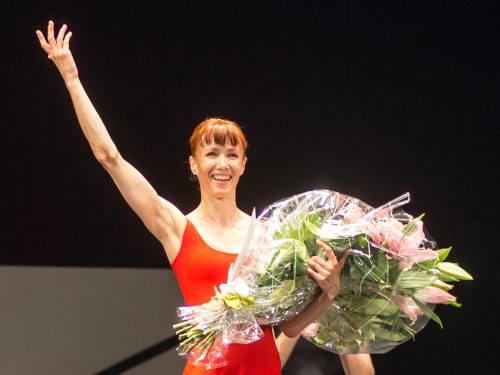In August 2014 I was invited to give an inaugural CrowdShed talk on the subject of ‘Reach’. The talk popped into my head again recently as I was thinking about the productive confluence of vision x opportunity x focus.
It’s a glorious set of messages to reshare now.
For cultural context, it was the week of a wonderful supermoon, and the suicide of Robin Williams.
Video for watchers below, and the transcript for readers is just underneath. Happy viewing/reading.

I had the privilege of being asked several weeks ago by Steve Moore to speak on the topic of Longing, which funnily enough I had planned out within about 10 minutes of agreeing to do it. A couple of weeks ago, the brief changed to ‘Reach’ and that made me think about the intersection and difference in those two thoughts.
Longing seems emotional and unsatisfying and passive, doesn’t it?
Whereas ‘reach’ seems alive and active. What I love about the thought of reach is that it’s both the act of striving for a desired outcome or destination, as well as the actual arrival at it. “We reach for our dream. We reach our dream.”
My background is a blend of entrepreneur and commercial brand marketer. I have worked on six start-ups and several global brands like PayPal, Gumtree, Mills & Boon. I’m currently CEO of my seventh and (I’m an idiot) eighth start-ups right now.
As a marketer you might expect me to talk about Reach in the context of consumer campaigns or market penetration.
But mixing brand marketing into my leadership and strategy role is challenging enough in my day job. Never mind the fact that this week almost my entire team are on holiday. Which means my workload is challenging.
So, forgive me if I don’t take the obvious route with the brief of Reach today – frankly, I’m relishing the time here, far away from reaching customers and suppliers.
Given how stretched I am at the moment, I decided to communicate my experience of Reach in the form of 12 minutes of Interpretive Dance [fling arms around for a bit].
Not really 🙂

The pictures here are of Sylvie Guillem. Without a doubt in my mind the greatest living dancer.
Despite my own dancing skills I am a huge fan of ballet and contemporary dance, the exceptional physical and emotional reach of dancers and dance makes my heart soar and relaxes my mind. The exceptional endeavour of artists reaches into us and inspires us.
Sylvie has been much on my mind lately because she and Russell Maliphant performed Push for the last time in London a couple of weeks ago. They’re stopping Push because she is 49 and Russell is 53. He lifts and carries, lifts and carries, lifts and carries her for 8 minutes at the start of the pas de deux. It’s amazing what heights of achievement and longevity the truly determined can Reach.
I’m reminded of Martin Sorrell. Has everyone here heard of WPP? Did you know Sorrell was 41 when he took the reins of a company called Wire & Plastic Products? And 42 when he started buying up the big ad agencies. He reached an age when most would consider their career direction to be set. Not Martin Sorrell. He was just getting started.
We can do anything we want. At any stage in life. Today you’re the youngest you’ll ever be. Why not Reach for the stars? You might get a supermoon.
In my case, at this moment in my career, reaching for the stars means founding and growing businesses.
I want to make consumers fall in love with us and I want our team to be driven to reach their highest potential. My end goal is happy customers and a happy team. I’ll come back to reaching a state of happiness at the end.
I applied the concept of Reach to entrepreneurial life. I’m going to talk about reaching inside yourself. Reaching out. And reaching goals and what all that means.
Reach inside yourself for your own resources.
Find out how strong you can be.
Find out how much work you can eat up.
How much revenue you can make for the company.
How many deals you can do.
How happy you can get your team.
Unless you push yourself to reach the farthest farthest point – you’ll never know what you’re capable of. Only in extremis and adversity do we really reach inside ourselves to plumb our own resources.
I encourage everyone here to remind themselves to reach inside and find out more about themselves and their own resources. Whether by running a marathon, a soup kitchen, a company or something else.

Reaching out and accepting support and help.
In the past I’ve been terrible at asking for help. I’ve always felt it was a sign of weakness.
I’m getting better at it. The more I reach out and ask for help, the more it comes to fortify me and my objectives.
This afternoon I bumped into my business partner’s father-in-law. He lives around the corner from me. He has managed a huge food service procurement business for 25 years. A good person to talk to. You’d think I’d be round there most weeks, wouldn’t you? I should be reaching out more to someone who’s so clearly on my side and lives under a minute away.

Today we talked about the business and I explained that whilst we raise seed funding I’m making decisions that are based not on what’s right for the company but on what’s cheapest. Bless him, he’s given me a zero interest never-ending loan. By reaching out and – yes revealing what I feel to be vulnerability – I don’t want to be judged for this exact moment in time! – one of my problems has gone.
We can be too independent. If we reach out, we’ll find we have plenty of cheerleaders around us who want to reach in.

Reaching beyond your comfort zone. I gave a talk at London Tech Week a couple of months ago. My main topic, funnily enough, was reaching out to consumers. It’s truly surprising to me that many many colleagues would rather hide behind a screen – be it an online survey or a spreadsheet of projections or analytics – instead of talking to real customers.
Go out to market before you’re ready. You’ll feel naked, in fact, you will be naked. There’s nowhere to hide.
 But get out there and speak to everyone. Everyone. Know your bullseye target consumers, know your definitely-nots, know why, when, how they might use your business. Reach out to them. They’re human. They will respond to you. By talking to your customers, even casual customers, you will endear them to you and your business. They ‘know’ you. They will be your advocates.
But get out there and speak to everyone. Everyone. Know your bullseye target consumers, know your definitely-nots, know why, when, how they might use your business. Reach out to them. They’re human. They will respond to you. By talking to your customers, even casual customers, you will endear them to you and your business. They ‘know’ you. They will be your advocates.
On July 12th, over a month before I had a product I could show anyone, I launched my company to consumers. We launched Here & Now at the Barnes Fair, which is perfect target market.
There, as well as reaching out and engaging with a perfect audience I learned something.
We worked out who our bullseye target audience is – working mothers and divorced dads – in every case their eyes lit up like Christmas trees when I asked them if they needed help finding and booking awesome things to do locally with children.
Going to our market uncomfortably early will, I think, result in a customer acquisition cost at around £2 to £2.50 instead of the £8 to £12 our competition work to. [Edit: we got it below £1 soon after this – yay!]
Reaching out beyond a comfort zone almost always reaps reward.

There’s great joy in reaching out.
So, what happens when we get to the end?
There are so many unhappy rich people. People say it’s better to be rich and miserable than poor and miserable. Well I’d rather be happy. Wealth and success doesn’t always result in happiness. Robin Williams’s suicide is an awful exemplar.
So I’d say this. I’d say, forget the applause, the wealth and robes of success.
Be happy that you have endorphins racing through your body.
Be happy that you’ve reached your audience’s soul.
And happy that you’re reaching for your own high potential.
Be happy you’ve danced a great dance.

*if anyone can help me with photo credits I’d be hugely grateful. Please leave a comment or tweet me @tarabluesky. I’ve lost the original links.






 Sipsmith’s first distillery was in a small site on Nasmyth Street in Hammersmith, then a larger space in Chiswick with room for a second and then third copper pot still, and a growing team.
Sipsmith’s first distillery was in a small site on Nasmyth Street in Hammersmith, then a larger space in Chiswick with room for a second and then third copper pot still, and a growing team.
 Brewdog
Brewdog Similarly, crime fiction publisher
Similarly, crime fiction publisher 

